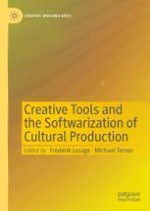2024 | OriginalPaper | Chapter
4. Generative AI and the Technological Imaginary of Game Design
Author : Stefan Werning
Published in: Creative Tools and the Softwarization of Cultural Production
Publisher: Springer Nature Switzerland
Activate our intelligent search to find suitable subject content or patents.
Select sections of text to find matching patents with Artificial Intelligence. powered by
Select sections of text to find additional relevant content using AI-assisted search. powered by
